Story and photos by Pete Vack
They are charming, as only a French car can be. They are rare; only a few were ever made, a long, long time ago. They are almost totally useless, as many classics are. They are relatively slow and they are stiffly sprung, as a car made in the mid-twenties can often be. Most have no differential, so a locked rear end is a way of life. They have no weather protection, making them inadequate outside of California. Parts must be fabricated, not bought. No one knows what they are.
Why then do I want one so badly?
I think it is the charm and the beauty, along with just the idea of a French sports car from the 1920s. It says, ‘Now I’m not a Bugatti, but affordable, and will still give you the ride of your life.’ Or death, as in the case of dancer Isadora Duncan. Maybe that’s part of it too, though some would rather have it that she died in a Bugatti instead, which sounds even more romantic. Plus everyone has heard of Bugatti, but Amilcar?
It sounds so quaintly French, this “Ameel car”, I mused out loud. Pretty. Then the voice behind me said, “Amilcar.” Did he say Amilcar, rhyming with Camelcar? “Yep”, said owner Paul Wilson. Crap, I thought. That sounds downright clumsy. Well that’s one romantic idea shattered.
Fortunately, it was the only downside to love at first sight. As far as I am concerned, Paul’s 1926 CGSS (Chassis Grand Sport Surbaissé) is just about the most desirable Amilcar one could own. “The CGSS was not only a high point in the history of Amilcar but also in the annals of the sports cars of the late 1920s,” wrote Gilles Fournier in his history of Amilcar.
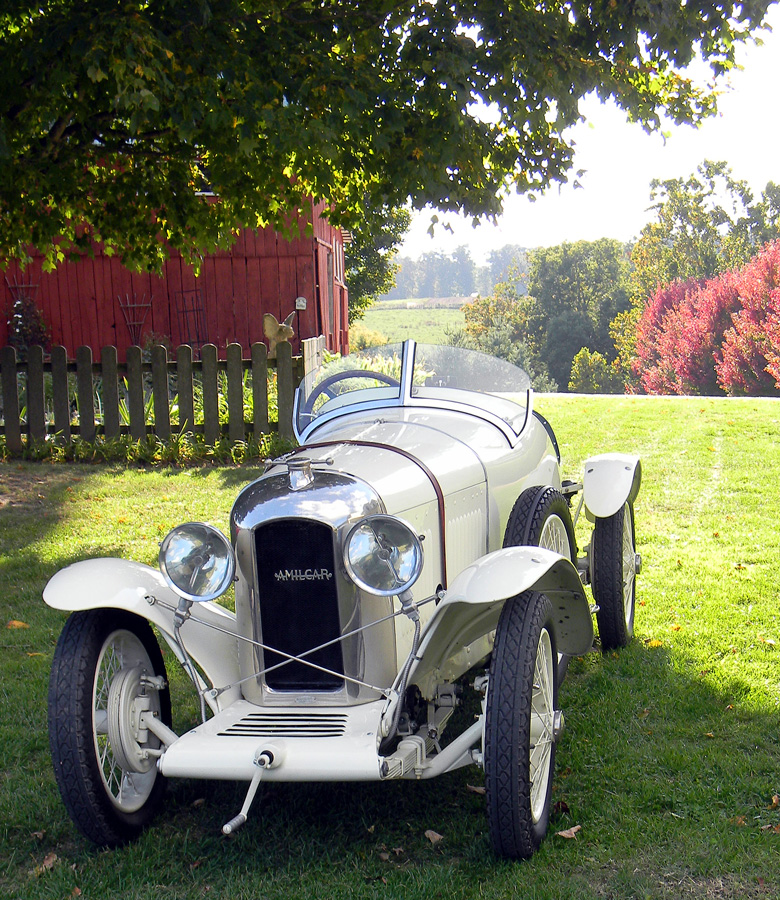
Paul Wilson fabricated the beautiful windscreen frame based on photos of other Duval bodied Amilcars.
Ok, one might want a CGSS with an Eldridge cowl and a Bordino tail, but those are really tough to find. Because when one thinks of small displacement four cylinder cars from the 1920s, one thinks s-l-o-w and immediately attention is given to adding optional of-the-era speed modifications. One might wish for the Cozette supercharger, or an ohv conversion but the 4 cylinder 1075cc iron sidevalved flathead is reliable and easy to maintain, and still puts out about 35 hp, enough to get the Amilcar up to 60 mph. One might think that the supercharger would have helped – it was a popular option at the time. But the engine has only two main bearings and anything over 4000 rpm with the aftermarket supercharger on usually resulted in a broken crank.
If you are enjoying this article please click here to subscribe to VeloceToday for only $5 a month!
Surbaissé is a French word for lowered, and the CGSS is noticeably lower, shorter, with larger tire cross section than its predecessors. It is positively modern, almost. This CGSS not only is surbaissé but has the staggered seats, instead of ‘side by side’ seats. Very chic, that. Originally available with a three speed box, Paul’s had the four speed that came along on the E model but in most cases he uses second gear anyway as first is a real stump puller.

We just stood around staring at the Amilcar’s engine for a while. Geez, I thought. It’s so small. But gets the job done. Intake and exhaust are on the other side.
If that isn’t enough, the aluminum over wood bodywork was fitted by French carrossier CH. Duval, who provided his own catalog of factory approved bodies from formal coupes to racing cars. Long missing its fenders, Paul created his own ‘butterfly’ fenders, more graceful and flowing than the typical cycle fenders used on most CGSS chassis. Missing too was the windshield, and Paul recreated the most elegant of the windshield styles of the Amilcar line.
“Time to go. Watch as I climb in. The driver gets in first, then the passenger.” I got halfway in, thinking this would have been a lot easier if I was 50 years younger. Paul said, “use the step”. Oh ya, that would help. Where one falls into a Miura, one climbs up into an Amilcar.
I am a passenger. None of us probably really likes being a passenger. But I’m not going to get a chance to actually drive, so I try to adapt to this unusual role in life; at least I’m sitting on the left, or ‘right’ side of the car going down the road, as the Amilcar is a right hooker, as were Bugattis of the era.
As it turns out being passenger is truly enjoyable; breezy, open, like a motorcycle with a body, reminding one that the Amilcar CGSS is only two steps removed from being a cyclecar. The tiny engine hums with a distinct four cylinder note but not loud, nor is the windnoise. We are able to converse almost normally. We motor through the hills and dales, not particularly fast nor particularly slow, probably on par with a MGTC. With only 1200 lbs to haul, even 33 hp is enough to get one down the road fast enough.
Over really rough roads it could have been unpleasant, but on this day there were only smooth, country roads. Anyone who admires an Amilcar has an active imagination, and it didn’t take much to imagine that we were on French roads in the 1920s.
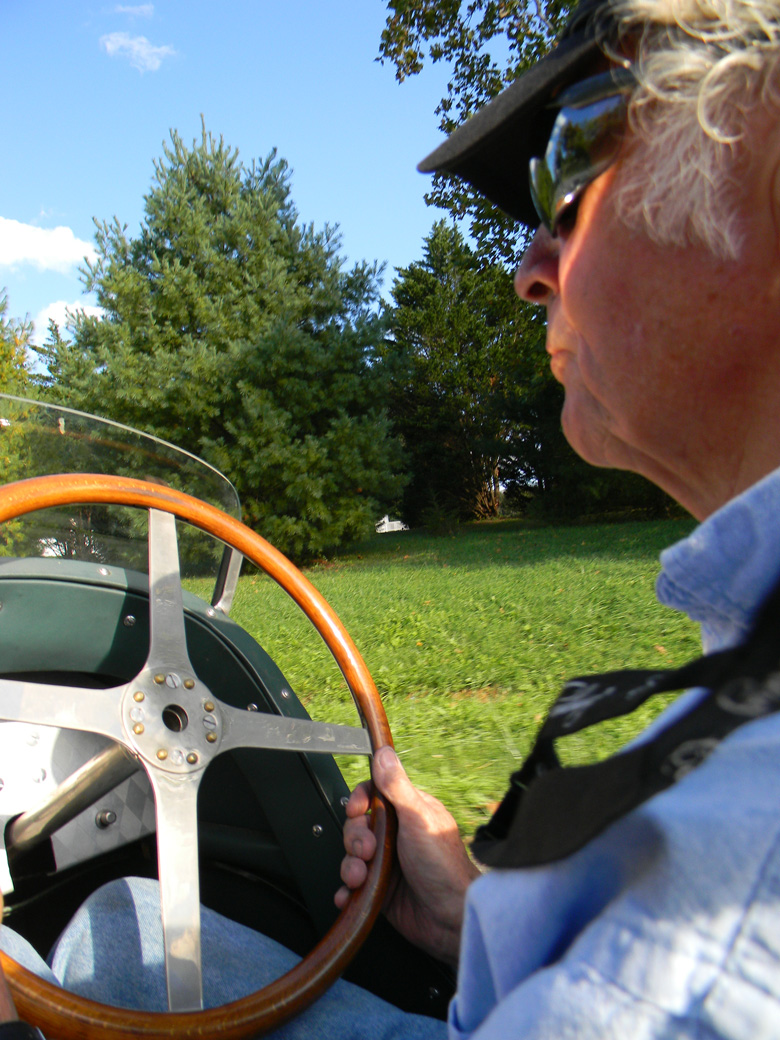
Paul at the wheel. We don’t have a torque rating, but Paul is always impressed at the Amilcar’s ability to get up hills.
Wrote Gilles Fournier, “…the strong point of the CGSS was its ability to give the driver the impression he was in charge of a powerful speedster.” Onlookers thought that they had just seen “a proper racing car go by.” Truly a “poor man’s Bugatti”, the phrase was a little overdone as if a young man could afford a car in France in the 20s, he was not poor.
I couldn’t help but wonder about the brakes. All of us were raised on hydraulic brake lines on discs. The thought of stopping via rod and cable is outside the realm of our imagination. Paul said they work very well, though there is a bit of axle wind up in the back at times.
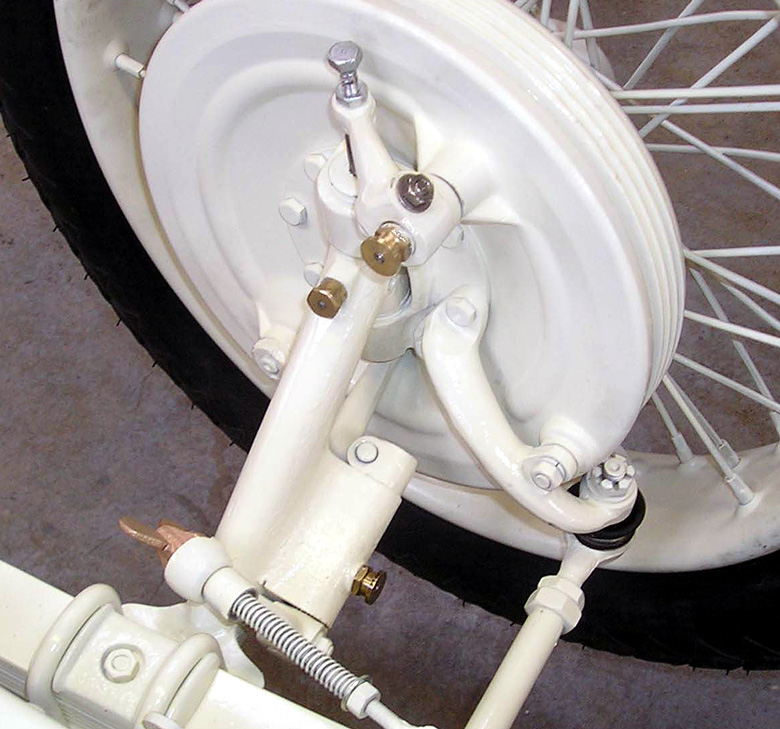
At the top of the kingpin one can see the brake rod and adjustment nut over the forked lever that activates the brake cam inside the wheel. (Paul Wilson photo)
It seems that Amilcar had one of the best rod actuated front brakes ever, and probably the best design for a braking system before the advent of the hydraulic brakes. One of the problems of mechanical brakes was that the as the front wheels turned right or left or up and down or if the axle flexes, one side or the other of the front wheels had uneven brake operation. Amilcar solved this by inventing a method where a brake rod was inserted into the kingpin and allowed an even application of the brakes no matter if the wheel was left, right, or straight.
Having spent some very enjoyable moments as a passenger in a Type 35 Bugatti, there is little doubt that the Amilcar lacks the power and wonderful noises of the Bugatti. But the Amilcar nevertheless captures the same excitement, historical spirit and the same pure joy of motoring. Fournier noted that the CGSS was so popular because it had pleasing lines and was “particularly enjoyable to drive, thanks to its very good roadholding and lighter steering.” I’m sure Paul would agree.
The CGSS was produced from late 1926 to 1929 and some 984 were built at the rate of one or two a day.
Now I’m going to do something I just know I will regret. While not eager to sell, Paul recently wrote an ad for the car. It goes something like this:
Cartoonist Charles Addams’s Amilcar CGS sold at a Bonhams auction in 2014, for $191,400. However, the celebrity ownership had an outsize influence on this result. One restored by D.L. George had an estimate of $125-175K at the Gooding Monterey auction in 2010; it was withdrawn from the auction because it backfired through the blower and broke a timing gear. The D.L. George car has a high-dollar professional restoration that probably cost most of its estimated value (the car was incomplete, much modified, and rough when they started). On the lower end of the scale, most European cars have a cosmetic standard unacceptable here; they sell quickly in the $60-70K range. I think a fair price for mine would be $79K.
And I have another idea. What if you would rather have something on the other end of the scale. Say, my Ferrari 308GTB QV. A very low mileage Euro version. You buy the Ferrari for about the same amount, and I’ll buy the Amilcar. Any day of the week.
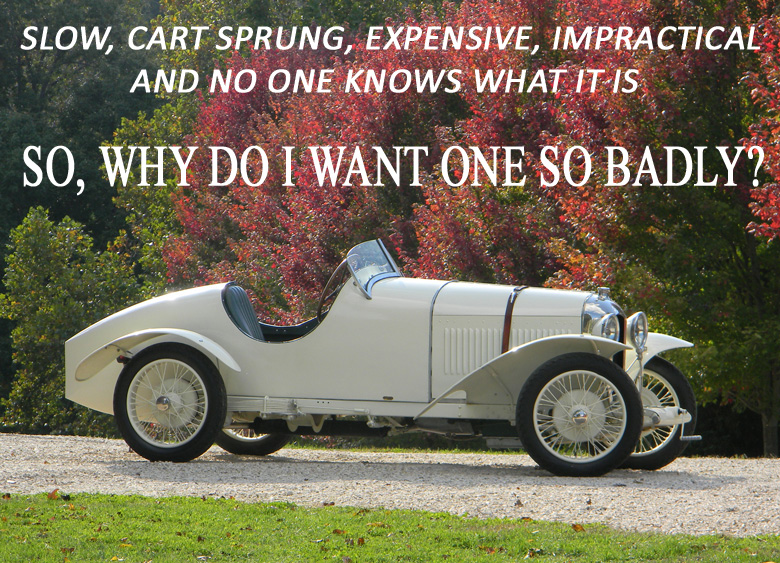


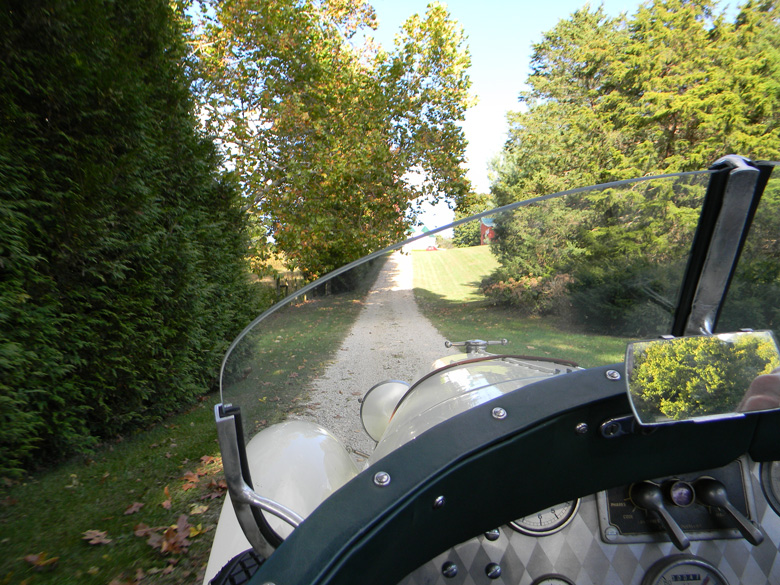

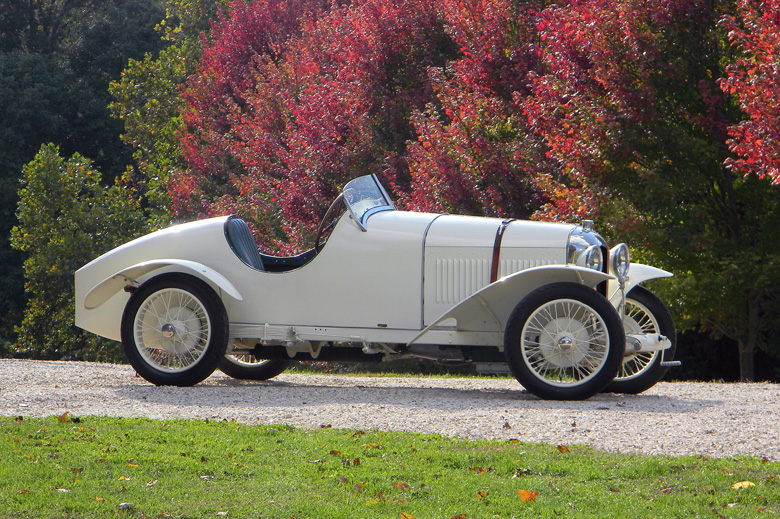
Get one Pete! I did an engine rebuild followed by pleasant road testing almost 50 years ago on a cycle fender CGSS that resided in Montclair NJ. The brakes did amaze me, I expected behavior like a (hydraulic!) MGTC, and did not get dodgy miss-direction at all. Just stopped like a modern. Sweet steering as well. The engine is fragile inside, we had two of them to start with, including connecting rods someone had welded back together….
Deelightful tale and your description…
Sure enjoyed the ride back to 1920s.!
Had my own, summer of 1970 while on vacaton in England
Had bought an M.G. TC from Wilkinson & Sons restoration
shop in Derby, but the real kicker was owner Frank Gilbert
taking me out for ride in his Bugatti Type . 37A voiturette
I felt transformed back to that era and his car might have
been fastest thing on road then.
Gave me new appreciation of the car in its true element.
Jim Sitz
Oregon
Very lovely ca; romanic story. Makes me feel like driving it through a northern NJ rally, then take it home and cuddle with it.
As the owner of an HRG, circa 1947, I can attest that the British, at that time had not mastered mechanical braking. Despite the handy brake adjustment knob on the floor, a panic stop could lead to the car spinning down the street. The dry handling could embarrass many modern cars, although the sight of the unloaded front wheel spinning in the air would have surprised. – Don Falk
I know where there is a very pretty one, that is available.
And now for sale at Hyman Ltd. for $105k? Looks like they painted the engine and under the fenders. Must be expensive paint to justify the $26k price increase…